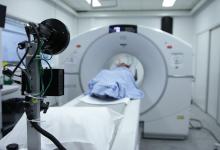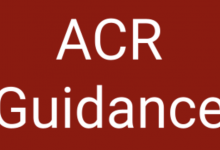2022 CDC Clinical Practice Guideline on Opioid Prescribing Save

The CDC has updated its Guideline for Prescribing Opioids for Chronic Pain and includes recommendations for managing acute (duration of <1 month), subacute (duration of 1–3 months), and chronic (duration of >3 months) pain.
This guideline provides recommendations for clinicians providing pain care, including those prescribing opioids, for outpatients aged ≥18 years. The recommendations do not apply to pain related to sickle cell disease or cancer or to patients receiving palliative or end-of-life care.
The guideline has 12 recommendations that address the following four areas:
- determining whether or not to initiate opioids for pain
- selecting opioids and determining opioid dosages
- deciding duration of initial opioid prescription and conducting follow-up
- assessing risk and addressing potential harms of opioid use.
CDC developed the guideline based on systematic reviews of the scientific evidence and reflect considerations of benefits and harms, patient and clinician values and preferences, and resource allocation. CDC obtained input from the Board of Scientific Counselors of the National Center for Injury Prevention and Control (a federally chartered advisory committee), the public, and peer reviewers. CDC recommends that persons with pain receive appropriate pain treatment, with careful consideration of the benefits and risks of all treatment options in the context of the patient’s circumstances.
Recommendations should not be applied as inflexible standards of care across patient populations. This clinical practice guideline is intended to improve communication between clinicians and patients about the benefits and risks of pain treatments, including opioid therapy; improve the effectiveness and safety of pain treatment; mitigate pain; improve function and quality of life for patients with pain; and reduce risks associated with opioid pain therapy, including opioid use disorder, overdose, and death.
Recommendations (see full document for Implementation Considerations and rationale)
- Nonopioid therapies are at least as effective as opioids for many common types of acute pain. Clinicians should maximize use of nonpharmacologic and nonopioid pharmacologic therapies as appropriate for the specific condition and patient and only consider opioid therapy for acute pain if benefits are anticipated to outweigh risks to the patient. Before prescribing opioid therapy for acute pain, clinicians should discuss with patients the realistic benefits and known risks of opioid therapy (recommendation category: B; evidence type: 3).
- Nonopioid therapies are preferred for subacute and chronic pain. Clinicians should maximize use of nonpharmacologic and nonopioid pharmacologic therapies as appropriate for the specific condition and patient and only consider initiating opioid therapy if expected benefits for pain and function are anticipated to outweigh risks to the patient. Before starting opioid therapy for subacute or chronic pain, clinicians should discuss with patients the realistic benefits and known risks of opioid therapy, should work with patients to establish treatment goals for pain and function, and should consider how opioid therapy will be discontinued if benefits do not outweigh risks (recommendation category: A; evidence type: 2).
- When starting opioid therapy for acute, subacute, or chronic pain, clinicians should prescribe immediate-release opioids instead of extended-release and long-acting (ER/LA) opioids (recommendation category: A; evidence type: 4).
- When opioids are initiated for opioid-naïve patients with acute, subacute, or chronic pain, clinicians should prescribe the lowest effective dosage. If opioids are continued for subacute or chronic pain, clinicians should use caution when prescribing opioids at any dosage, should carefully evaluate individual benefits and risks when considering increasing dosage, and should avoid increasing dosage above levels likely to yield diminishing returns in benefits relative to risks to patients (recommendation category: A; evidence type: 3).
- For patients already receiving opioid therapy, clinicians should carefully weigh benefits and risks and exercise care when changing opioid dosage. If benefits outweigh risks of continued opioid therapy, clinicians should work closely with patients to optimize nonopioid therapies while continuing opioid therapy. If benefits do not outweigh risks of continued opioid therapy, clinicians should optimize other therapies and work closely with patients to gradually taper to lower dosages or, if warranted based on the individual circumstances of the patient, appropriately taper and discontinue opioids. Unless there are indications of a life-threatening issue such as warning signs of impending overdose (e.g., confusion, sedation, or slurred speech), opioid therapy should not be discontinued abruptly, and clinicians should not rapidly reduce opioid dosages from higher dosages (recommendation category: B; evidence type: 4).
- For patients already receiving opioid therapy, clinicians should carefully weigh benefits and risks and exercise care when changing opioid dosage. If benefits outweigh risks of continued opioid therapy, clinicians should work closely with patients to optimize nonopioid therapies while continuing opioid therapy. If benefits do not outweigh risks of continued opioid therapy, clinicians should optimize other therapies and work closely with patients to gradually taper to lower dosages or, if warranted based on the individual circumstances of the patient, appropriately taper and discontinue opioids. Unless there are indications of a life-threatening issue such as warning signs of impending overdose (e.g., confusion, sedation, or slurred speech), opioid therapy should not be discontinued abruptly, and clinicians should not rapidly reduce opioid dosages from higher dosages (recommendation category: B; evidence type: 4).
- Clinicians should evaluate benefits and risks with patients within 1–4 weeks of starting opioid therapy for subacute or chronic pain or of dosage escalation. Clinicians should regularly reevaluate benefits and risks of continued opioid therapy with patients (recommendation category: A; evidence type: 4).
- Before starting and periodically during continuation of opioid therapy, clinicians should evaluate risk for opioid-related harms and discuss risk with patients. Clinicians should work with patients to incorporate into the management plan strategies to mitigate risk, including offering naloxone (recommendation category: A; evidence type: 4).
- When prescribing initial opioid therapy for acute, subacute, or chronic pain, and periodically during opioid therapy for chronic pain, clinicians should review the patient’s history of controlled substance prescriptions using state prescription drug monitoring program (PDMP) data to determine whether the patient is receiving opioid dosages or combinations that put the patient at high risk for overdose (recommendation category: B; evidence type: 4).
- When prescribing opioids for subacute or chronic pain, clinicians should consider the benefits and risks of toxicology testing to assess for prescribed medications as well as other prescribed and nonprescribed controlled substances (recommendation category: B; evidence type: 4).
- Clinicians should use particular caution when prescribing opioid pain medication and benzodiazepines concurrently and consider whether benefits outweigh risks of concurrent prescribing of opioids and other central nervous system depressants (recommendation category: B; evidence type: 3).
-
Clinicians should offer or arrange treatment with evidence-based medications to treat patients with opioid use disorder. Detoxification on its own, without medications for opioid use disorder, is not recommended for opioid use disorder because of increased risks for resuming drug use, overdose, and overdose death (recommendation category: A; evidence type: 1).
Conclusions
A central tenet of this clinical practice guideline is that acute, subacute, and chronic pain needs to be appropriately and effectively treated regardless of whether opioids are part of a treatment regimen. Clinicians should select nonpharmacologic or pharmacologic treatment modalities, or both, that maximize patient safety and optimize outcomes in pain, function, and quality of life. A multimodal and multidisciplinary approach to pain management that considers the biologic, psychological, and social characteristics of each person is critical. The care provided needs to be individualized and person centered. Clinicians and patients should work together to identify treatment goals, including functional goals, and tailor an approach that considers both the benefits and risks of available options. Progress should be monitored over time and treatment protocols adjusted accordingly. Health systems and payers can work to ensure multimodal treatment options are available, accessible, and reimbursed for patients. Public and private payers can support a broader array of nonpharmacologic interventions such as exercise, multidisciplinary rehabilitation, mind-body interventions, cognitive behavioral therapy, and certain complementary and integrative medicine therapies (e.g., acupuncture and spinal manipulation) that increasingly are known to be effective. Reimbursement often is cited as a principle barrier to why these nonpharmacologic treatments are not more widely used.









If you are a health practitioner, you may Login/Register to comment.
Due to the nature of these comment forums, only health practitioners are allowed to comment at this time.